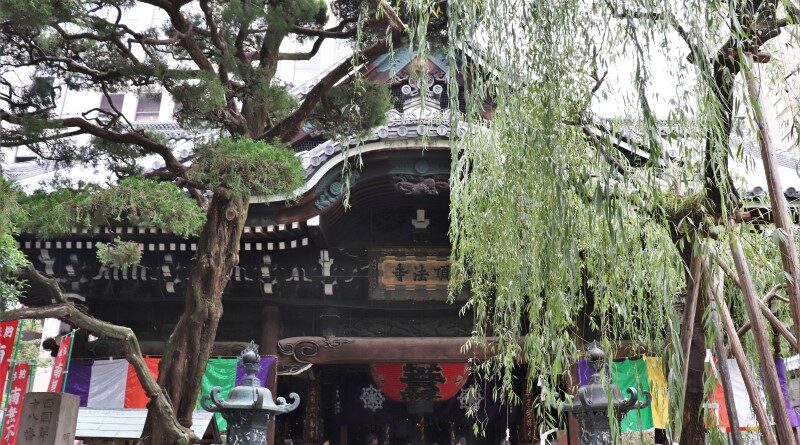
Rokkakudo Temple, the Birthplace of Ikebana
What might take most by surprise is that ikebana, the beautiful art of Japanese flower arranging, originated in a temple. Sitting at the very heart of Kyoto city is Chohoji Temple, better known by its common name, Rokkakudo.
Temple Grounds
According to the temple legend, after Prince Shotoku won against Mononobe no Moriya, he went to Kyoto for lumber to build the soon-to-be Shitenno-ji Temple.
When he arrived in Kyoto, he was rather tired from his journey. After a little searching, Shotoku found a pond where he could bathe. He hitched his horse and secured his possessions. He also traveled with a statue of Nyoirin Kannon, and since was very important, he put it next to a tree near the pond. Refreshed from his bath, Shotoku went to collect the statue —but it wouldn’t budge!
That night as he slept, he dreamt that his statue told him it wanted to be there to help people. Since there was no arguing with divine visions, he decided to make a hexagon-shaped temple to enshrine the statue in 587.
Due to the shape of the temple, people gradually started calling it Rokkakudo (rokkaku meaning six angles).

Rokkakudo Temple is fairly small, especially considering that this is part of the Saigoku Kannon Pilgrimage. However because it is close to Nishiki Market, many people drop by on the way to the market.
Once you get in, you will see the main building, or hondo, straight away. From above, you can see its hexagonal shape.
The main statue of Rokkakudo is allegedly Prince Shotoku’s Nyoirin Kannon statue. This tiny statue is only 5.5 cm tall and is kept safe inside the temple out of public view.
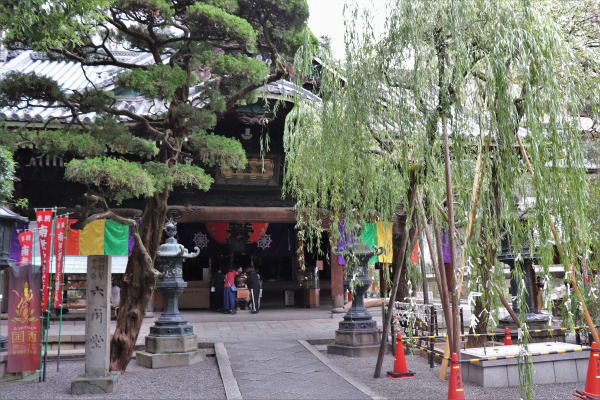
Make sure to check out Heso-ishi, the belly button stone.
When Emperor Kanmu moved the capital from Nagaoka Palace to Heian Palace, Rokkakudo was right in the middle of the road. Every so nicely, the emperor asked Rokkakudo to move just a little bit to the north so he could build his new capital. Surprisingly, the next day, the temple has indeed moved out the way, leaving only heso-ishi behind. Today, this stone represents the center of Kyoto, so be sure to get a picture of it!
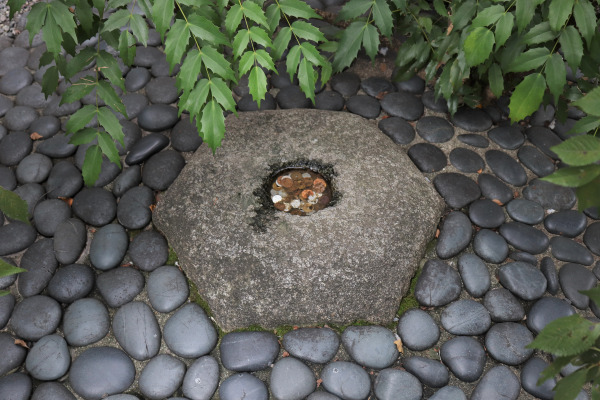
There are so many pigeons in Rokkakudo!
I thought there must be some reason why there were so many, but it seems that the pigeons are not particularly important. They are even on the temple ema and the omikuji are pigeons too! Most of the pigeons are very tame and have no problem with you getting close to them.
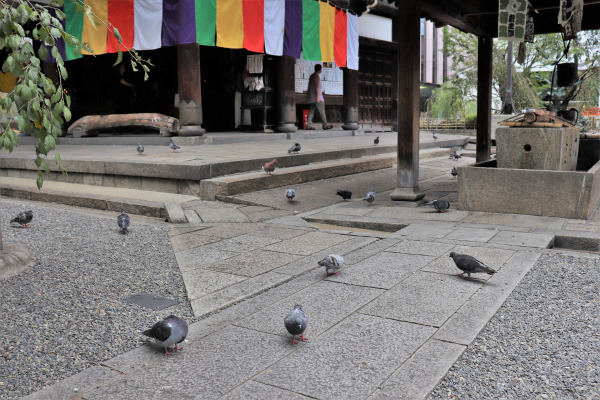

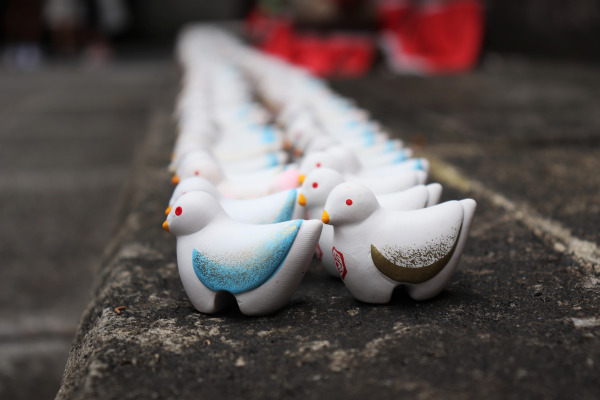
Birthplace of Ikebana
There is another side to Rokkakudo. Rokkakudo is the birthplace of the art of Japanese flower arranging, ikebana, also called kado. Like sado (tea ceremony) and shodo (calligraphy), kado is an art form with hundreds of years of history.
The person who started this was Ono no Imoko, who lived in a little hut near the pond where Prince Shotoku bathed which he called ikenobo.

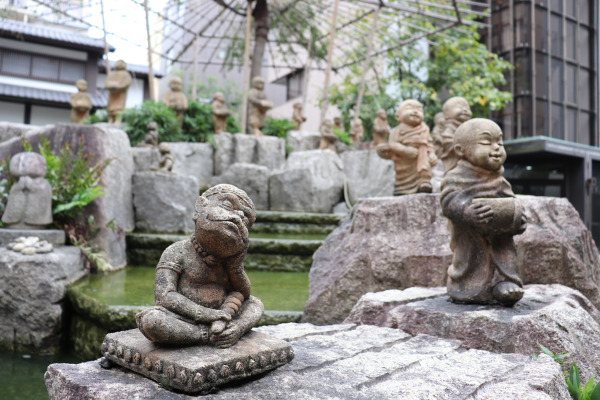
While studying in China, Imoko saw the artful way people would arrange flowers for the dead. When he got back to Rokkakudo, he decided to introduce the same tradition in Japan and gave it the name ikebana. Eventually, the head monk of Rokkakudo established the School of the Floral Arts in the Muromachi Period.
Rokakudo Temple
| Address |
248 Donomaecho, Nakagyo, Kyoto
|
| Website |
|
| Directions |
|
| Hours |
6:00~17:00
|
| Admission |
Free
|
| Note |
|
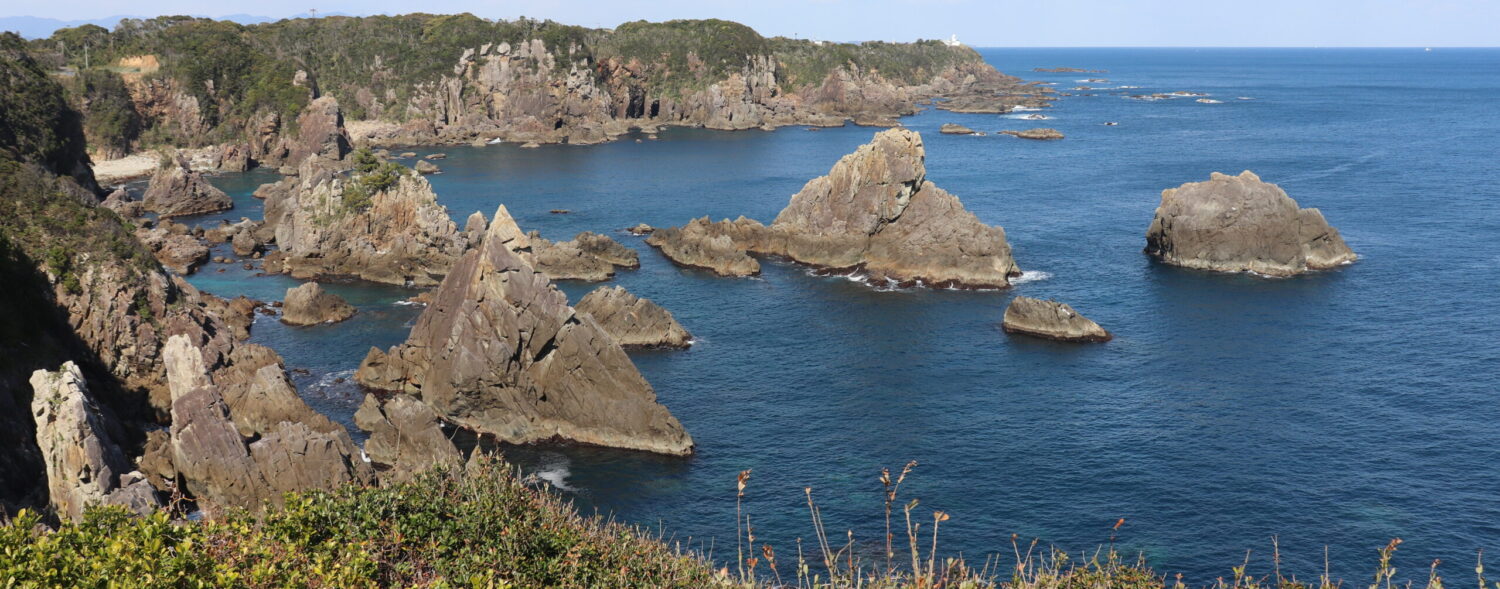
Leave a Reply